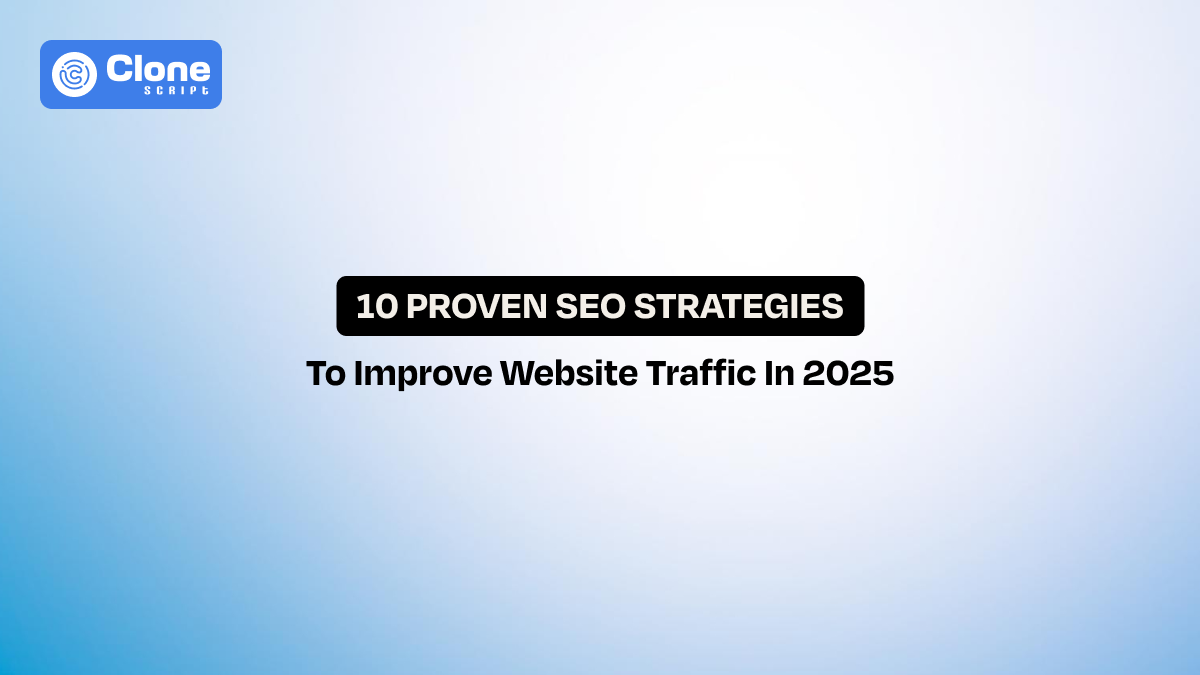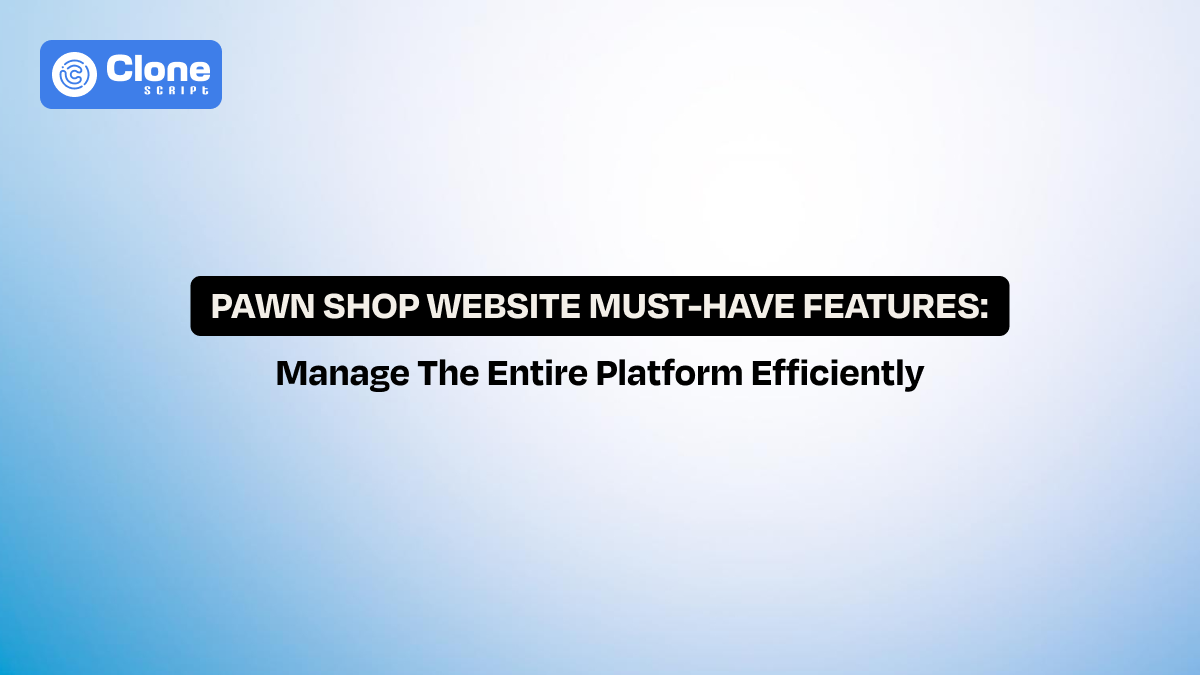10 Proven SEO Strategies to Skyrocket Your Website Traffic in 2025
A decade ago, SEO was little more than a game of keywords and backlinks. But in 2025, the rules of search have completely changed.
Search engines now act less like keyword matchers and more like quality inspectors. They are analyzing user experience, topical authority, and credibility signals to decide which sites deserve visibility.
In this guide, we’ll break down 10 proven SEO strategies for 2025. These aren’t outdated tricks or quick wins. They are tested methods from advanced on-page search engine optimization to smart use of AI tools that consistently increase website traffic. It improves rankings and builds sustainable online visibility. If your goal is to get more organic traffic while future-proofing your digital presence, the idea starts here.
Tip 1. Focus on High-Quality Content Creation.
Content is still important in search engine optimization, but in 2025, the definition of “quality” has become sharper. It’s no longer enough to publish frequent posts stuffed with keywords.
Google now prioritizes relevance, depth, and trustworthiness. Pages that answer questions thoroughly, offer original insights, and reflect real expertise rise above generic information.
The result? Higher rankings, better engagement, and traffic that converts.
How to do it:
-
Research search intent deeply – Go beyond keyword research. Understand whether users want a quick answer, a product comparison, or an in-depth guide.
-
Add depth and originality – Bring something new: real case studies, expert commentary, updated statistics, or personal analysis instead of repeating what’s already out there.
-
Write for readability – Use clear headings, short paragraphs, and bullet points so readers (and search engines) can scan and digest information easily.
-
Support with credible data – Cite research reports, government sources, or trusted industry studies. This not only improves authority but also builds user trust.
-
Refresh regularly – Keep your content alive by revisiting it quarterly. Update stats, refine examples, and check that it aligns with current search trends.
Tip 2. Optimize for On-Page SEO.
On-page SEO is the bridge between your content and how search engines interpret it. In 2025, it’s not only about sprinkling in keywords but about structuring your pages for clarity, accessibility, and engagement.
When titles, headings, metadata, and internal links are fine-tuned, your website becomes easier for Google to crawl and more compelling for users to explore. It explains to both humans and algorithms a clear roadmap to your content.
How to do it:
-
Craft keyword-rich titles – Place primary keywords naturally in titles, while keeping them concise and attractive to readers. A clear title boosts both ranking and click-throughs.
-
Write compelling meta descriptions – Use 150–160 characters to highlight value. Instead of keyword stuffing, frame it as a promise that encourages clicks.
-
Add structured data – Implement schema markup for FAQs, products, or reviews. Rich snippets (stars, pricing, answers) stand out in SERPs and increase visibility.
-
Improve internal linking – Guide visitors (and bots) to related pages by linking contextually. This distributes page authority and keeps users engaged longer.
-
Optimize headings (H1–H3) – Break content into logical sections using keyword-infused headings. This improves scannability and signals topical hierarchy to Google.
-
Balance keywords with semantics – Use variations and related terms so content flows naturally while still aligning with search intent.
Tip 3. Improve Website Speed & Core Web Vitals.
Website speed optimization is no longer optional. It’s a direct ranking factor. Google’s Core Web Vitals (Largest Contentful Paint, First Input Delay, and Cumulative Layout Shift) measure how quickly your site loads, how smoothly it responds, and how stable the layout feels.
A site that lags or shifts frustrates visitors, increases bounce rates, and signals to Google that the experience isn’t trustworthy. In 2025, a fast, stable, and interactive website is one of the clearest signals of quality you can deliver.
How to do it:
-
Use lightweight media – Compress images, adopt next-gen formats like WebP or AVIF, and lazy-load videos to reduce initial page weight.
-
Enable caching – Store elements locally on a user’s browser so returning visitors don’t need to reload every asset from the first step.
-
Deploy a CDN (Content Delivery Network) – Serve content from servers closest to the user’s location. It enhances the global audience's experience with faster loading times.
-
Simplify and optimize code – Minify CSS, JavaScript, and HTML code. Remove unnecessary plugins or scripts that slow performance.
-
Prioritize mobile speed – Optimize specifically for mobile devices since most searches now begin on smartphones, where speed expectations are even higher.
-
Monitor with tools – Use PageSpeed Insights or Lighthouse to track Core Web Vitals and fix performance issues proactively.
Tip 4. Build a Strong Backlink Profile.
Backlinks are still one of the strongest ranking signals in 2025, but the rules have changed. Google’s algorithms now reward quality, context, and authority far more than sheer quantity. A single backlink from a respected, niche-relevant site can outweigh dozens of generic mentions. Backlinks act as digital endorsements. This signals that your content is trusted, valuable, and worth ranking higher.
To succeed, focus on building a natural, authoritative backlink profile rather than chasing every possible link.
How to do it:
-
Prioritize niche relevance – Secure backlinks from websites in your industry. A link from a top blog in your niche carries far more weight than one from an unrelated directory.
-
Involve PR campaigns – Position yourself as an expert through digital PR, guest commentary, or thought-leadership content. Media mentions naturally bring high-quality links.
-
Create evergreen assets – Build resources like research studies, infographics, or tools that others naturally reference in their content.
-
Reclaim broken links – Use tools to find broken or outdated backlinks pointing to your domain and request updates with current URLs.
-
Encourage brand mentions – Turn unlinked mentions of your brand into backlinks by reaching out to publishers and requesting attribution.
-
Create collaborations – Partner with influencers, industry podcasts, or webinars where content naturally earns backlinks.
Tip 5. Prefer Local SEO for Better Reach.
Local search engine optimization is one of the most powerful ways to capture high-intent traffic in 2025. People searching for “near me” or city-specific services are often ready to buy, visit, or contact immediately.
By optimizing for local visibility, you not only attract nearby audiences but also gain a competitive edge over businesses that overlook hyper-targeted search.
Local SEO is about directory listings and building trust, consistency, and engagement in the digital spaces your community uses most.
How to do it:
-
Enhance your Google Business Profile (GBP) – Upload fresh photos, post updates, share offers, and respond quickly to questions. An active GBP signals credibility and keeps you visible.
-
Use local keywords strategically – Add city, region, or neighborhood-specific terms in titles, headers, and meta descriptions to connect with nearby audiences.
-
Maintain NAP consistency – Make sure your Name, Address, and Phone number are identical across your website, social media, and directories. Inconsistency confuses both users and Google.
-
Encourage customer reviews – Actively request feedback from happy clients. Positive reviews boost visibility in Maps and influence purchasing decisions.
-
Optimize for voice search – Many local queries happen via voice (“best café near me”), so structure content with conversational phrases.
-
Leverage local backlinks – Partner with local organizations, chambers of commerce, or events to earn geographically relevant backlinks.
Tip 6. Check Mobile-First Optimization in the Website.
In 2025, mobile-first indexing is the standard, not an option. With more than 60% of global web traffic coming from mobile devices, Google evaluates and ranks your site based primarily on its mobile performance.
A clunky, slow, or hard-to-navigate mobile experience doesn’t just frustrate users. It directly lowers your search visibility. Delivering a smooth, responsive mobile experience is now central to earning higher rankings and building user trust.
How to do it:
-
Adopt responsive design – Use flexible grids and layouts so your website adapts seamlessly to every screen size without breaking.
-
Prioritize usability – Ensure buttons, forms, and navigation are touch-friendly with clear CTAs, preventing accidental clicks and user drop-offs.
-
Test mobile compatibility – Run audits with Google’s Mobile-Friendly Test and Lighthouse to catch usability or layout issues.
-
Reduce load times – Compress media, use lazy loading, and minimize scripts so pages load quickly even on slower networks.
-
Avoid intrusive pop-ups – Mobile users often bounce when faced with full-screen ads or hard-to-close overlays.
-
Design for thumb navigation – Place key actions within the “thumb zone” for easier browsing on smaller devices.
Tip 7. Use AI & SEO Tools for Smarter Optimization.
Artificial intelligence is transforming search engine optimization in 2025. What once required hours of manual work: keyword research, content analysis, and competitor analysis can now be done in minutes with AI-driven platforms.
Beyond efficiency, AI provides predictive insights that help anticipate search trends, user intent, and ranking opportunities before they peak. The result: smarter strategies, faster execution, and campaigns that stay ahead of the curve.
How to do it:
-
Uncover keyword gaps – AI-powered tools analyze search intent and competitor rankings to reveal high-potential keywords others are missing.
-
Optimize content readability – Platforms use natural language processing (NLP) to evaluate structure, tone, and keyword integration. This makes content appeal to both users and algorithms.
-
Conduct competitor analysis – Machine learning highlights competitor strengths, backlink sources, and ranking strategies. It gives a roadmap to outperform them.
-
Automate reporting & alerts – AI dashboards track rankings, traffic, and Core Web Vitals in real time to save hours of manual monitoring.
-
Predict content performance – Advanced algorithms estimate which topics or formats will attract the most engagement before you publish.
-
Scale personalization – AI tailors content recommendations based on user behavior to improve on-page engagement and conversions.
Tip 8. Update and Repurpose Old Content.
Publishing new content is important, but it’s more efficient to improve what you already have. In 2025, search engines value freshness and relevance as much as originality. Articles that are outdated, thin, or missing recent trends risk slipping down the rankings, even if they were once high performers.
By updating and repurposing older content, you can reclaim lost visibility, attract new audiences, and extend the lifespan of your existing work without starting from scratch.
How to do it:
-
Refresh statistics and references – Replace outdated numbers with the latest reports or industry benchmarks to keep your content credible and timely.
-
Expand thin content – Identify short or underperforming articles and build them into detailed guides that fully answer search intent.
-
Experiment with new formats – Convert professionally written blogs into videos, podcasts, infographics, or slide decks to reach audiences who prefer visual or audio content.
-
Reoptimize keywords – Add trending long-tail keywords or semantic variations to stay aligned with evolving search behavior.
-
Update internal links – Point refreshed articles toward newer or high-priority pages to strengthen site structure and improve crawling.
-
Improve readability – Break older content into shorter paragraphs, add subheadings, and format lists for a smoother user experience.
Tip 9. Track SEO Performance & Analytics.
Search Engine Optimization without analytics is like sailing without a compass. You might move forward, but you’ll have no idea if it’s the right direction. In 2025, the most successful websites rely on data-backed decisions to guide their optimization efforts.
Tracking performance reveals which strategies bring results, which keywords convert, and where potential leaks in traffic or engagement occur.
By consistently monitoring and analyzing data, businesses can adapt quickly to algorithm updates, competitor moves, and shifting user behavior.
How to do it:
-
Measure organic traffic growth – Use Google Analytics or GA4 to monitor sessions, impressions, and CTR from organic channels.
-
Track keyword positions – Keep an eye on both primary and secondary terms with rank-tracking tools to see where visibility is increasing or slipping.
-
Audit backlinks regularly – Identify toxic or irrelevant links that could harm rankings and submit disavow requests where necessary.
-
Review engagement metrics – Monitor bounce rates, dwell time, and conversion paths to understand if content satisfies search intent.
-
Set up conversion tracking – Map goals like leads, sales, or downloads to measure how effectively SEO efforts contribute to business results.
-
Use dashboards for clarity – Combine data from multiple tools (Search Console, Analytics, rank trackers) into a single dashboard for quick decision-making.
Tip 10. Improve Organic Click-Through Rate (CTR).
Earning a top position on Google doesn’t guarantee clicks. If your result looks bland compared to competitors, users may scroll right past it. In 2025, optimizing click-through rate (CTR) is one of the fastest ways to unlock more traffic without necessarily improving rankings.
By fine-tuning how your title, description, and search snippets appear, you can transform impressions into visits and maximize the value of your existing visibility.
How to do it:
-
Craft compelling titles – Use numbers, power words, or brackets to stand out, while keeping them concise and keyword-rich.
-
Write persuasive meta descriptions – Highlight the benefit or solution your content provides so users know why it’s worth clicking.
-
Leverage schema markup – Add rich snippets (FAQs, ratings, reviews, product details) to visually differentiate your listing from plain-text results.
-
Test variations regularly – Run A/B tests or track CTR changes in Search Console to see which headlines and descriptions resonate best.
-
Match intent quickly – Check that your titles and descriptions align perfectly with user intent to reduce pogo-sticking and improve satisfaction.
Conclusion
SEO in 2025 is about chasing algorithms and building trust, delivering value, and adapting with precision. From creating high-quality content and optimizing for Core Web Vitals to implementing AI tools and refining CTR, every strategy works together to strengthen visibility and drive sustainable growth.
The businesses that win are those that stay consistent, measure performance, and evolve with search trends. By applying these ten proven search engine optimization strategies, you’re not just aiming for higher Google rankings. You’re creating a reliable system to attract, engage, and retain the right audience for the long term.
 BTC - Bitcoin
BTC - Bitcoin
 USDTERC20 - USDT ERC20
USDTERC20 - USDT ERC20
 ETH - Ethereum
ETH - Ethereum
 BNB - Binance
BNB - Binance
 BCH - Bitcoin Cash
BCH - Bitcoin Cash
 DOGE - Dogecoin
DOGE - Dogecoin
 TRX - TRON
TRX - TRON
 USDTTRC20 - USD TRC20
USDTTRC20 - USD TRC20
 LTC - LiteCoin
LTC - LiteCoin







